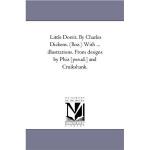|
This section contains 4,805 words (approx. 17 pages at 300 words per page) |

|
SOURCE: Philpotts, Trey. “The Real Marshalsea.” The Dickensian 87, no. 3 (autumn 1991): 133-45.
In the following essay, Philpotts discusses the London debtor's prison in which Dickens's father was incarcerated and which inspired the dominant symbol of Little Dorrit.
When John Dickens entered the gates of the Marshalsea on February 20, 1824, he unwittingly supplied his son with the presiding symbol for one of his greatest novels, Little Dorrit, as well as material that would influence his portrayal of the debtors' prison in The Pickwick Papers and David Copperfield. Despite the importance of the Marshalsea experience to the young Dickens, the prison itself, the real Marshalsea that John Dickens knew all too well, remains a shadowy presence for modern readers. In 1927 William Kent, citing James Neild's State of the Prisons in England, Scotland, and Wales (1811) as the only other book that he could find approaching in detail the descriptions in Dickens, provided the...
|
This section contains 4,805 words (approx. 17 pages at 300 words per page) |

|


